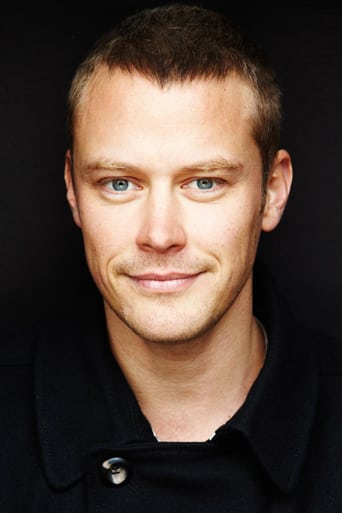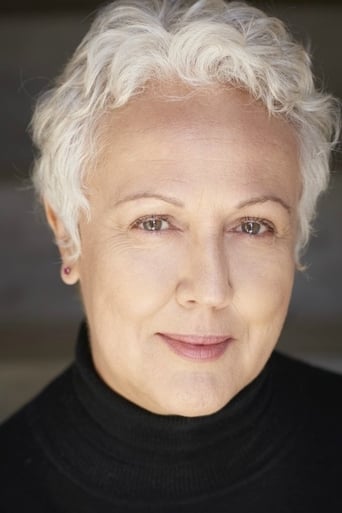Jeanskynebu
the audience applauded
Raetsonwe
Redundant and unnecessary.
Protraph
Lack of good storyline.
Pluskylang
Great Film overall
meaninglessbark
Despite reviews referring to 50 Ways as "charming" the movie is hardly a pleasant coming of age film. If you're looking for something sunny and lighthearted to watch look elsewhere. Though 50 Ways is quite sunny in its setting, New Zealand during a drought, there is a mean tone throughout the film as the cruelty of children and families is accurately portrayed over and over and over again. (So much so that when the films main bully, a standard stock character adolescent bastard, plunges over a bridge to the rocks below it feels like a bright spot in the film.)The scenery is nice, the acting is good. The music is horrible and plentiful, meandering flute tunes that seem as if they're meant to hammer home the notion of how charming it all is.50 Ways is pretty boring, nothing much happens except children being mean to anyone different than them and some moments of melodrama which seem thrown in just to make the film more exciting. There are also some fantasy sequences which are so irregular in their appearance that they seem as if they somehow bled over from an entirely different film.
Arcadio Bolanos
Stewart Main's production is a coming-of-age story that bears little resemblance to other typical and predictable movies. 12 year-old Billy idly watches a TV show with his best friend, a rather tomboyish girl who excels at boys sports and acts a bit manly. Inspired by what he sees on TV, Billy wears a fake ponytail and pretends to be Lana, the heroine of the sci-fi series while Lou, the girl, poses as the male hero. They subvert traditional gender affiliated roles as part of a game, but they are also aware of a certain otherness, a certain counterpart that can exist only in private.The figure of the double, largely described in fantastic literature, is usually developed when the main character fails to recognize his own-self, and starts experiencing a feeling of alienation. The double can adopt several forms, as for instance the form of the exact replica of the character, like in Dostoyevsky's "The double", or on the contrary, it can become the form of an absence of reflection in the mirror image, a horrifying 'presence' as in Maupassant's "Le Horla". Clearly Billy and his friend Lou find an ideal refugee in the form of fictional characters that supply that which they are lacking; Billy is a boy that wishes to be a girl, and Lou is a girl that wishes to be a boy.In this scenario, two other characters will help develop the dynamic of the double. First of all is Roy, the new kid in the school, who soon becomes attracted to Billy. A most revealing moment takes place when Roy is picked on by kids that held him to the ground, as a consequence of all this roughhousing, the young boy exhibits an erection that soon makes the other lads lose interest in him. This moment is defined by the emergence of sexual excitation in Roy's penis, an irruption of the drive of the real in his body; such pulsations also exist in Billy who stays behind and accepts Roy's invitation to touch his "stiffy".Do they experiment joy only through phallic exploration? The phallus has no image, the absence of representation in the visual field "signifies that in everything that is imaginary localization, the phallus appears in the form of a lack". As the days go by, Billy is not acquitted of guilt, but nonetheless he decides to join his friend Roy in a shack, wherein they mutually masturbate. But why does Billy seem uncomfortable after these sessions? Perhaps because if the phallus 'is characterized by a lack', then any image would only 'mask' that lack, evoking something which is absent, and in principle one can define that absence as something that pertains to our bodily existence in so far as what is missing in the virtual image is our real existence itself. In the same way Billy can never truly be Lana, from the TV show, he cannot envision his acts with Roy except in the darkness and secrecy of the shack. But what part of our anatomy permits the distinction between oneself and one's own image, including the multitude of others with whom we tend to identify? It is this distinction that seems to get distorted and somewhat effaced in the phenomenon of the double.The second important character in the story is Jamie, a guy in his twenties. As soon as he enters into the scene, Billy seems to forget all about Roy. He now starts daydreaming about this guy, this strange adult that could eventually pay some attention to him. But before Billy can get closer to Jamie, he must first decide if he should adopt the male or the female position, which is basically the same decision Lou has to make. As the relationship with Roy deteriorates, new problems will arise. The double, again, could signal the coming of ominous events.
burntime-1
Based on the novel of the same name by Graeme Aitken, and directed by Stewart Main, 50 WAYS OF SAYING FABULOUS is a coming-of-age story set in rural New Zealand in 1979.Its protagonist is Billy (Andrew Patterson), an overweight and overly-imaginative 12 year old boy main whose passion in life is watching science fiction adventures and reenacting them with his tomboy cousin Lou (Harriet Beatie).Lou loves rugby; Billy hates the game, a fact which confirms his status as an object of derision among the other local kids. The arrival of the even more awkward Roy (a gangly Jay Collins) at their small regional school changes the pecking order, and provides even Billy with someone that he can bully and belittle. Despite the tension between them, the two boys also embark on early sexual explorations together down by the creek, although neither of them know what a 'poofter' is, and accept the taunts of their peers to that effect in pained innocence.Complicating matters is another new arrival, Jamie (the charismatic Michael Dorman), a handsome young farmhand working for Billy's father, whose presence becomes the catalyst for tensions that disrupt the shared lives of these three almost-teens.While 50 WAYS OF SAYING FABULOUS does have merit in its honest exploration of the sexual awakening of a young gay boy on the verge of adolescence, and is occasionally warm and affecting, its narrative is episodic, and its dramatic structure is often contrived. Too, the plodding, unimaginative direction fails to imbue the story with any real tension, although several scenes, especially those shot at night, looked superb, with evocative lighting and composition.Had its running time been cut back to 45 minutes to an hour, this would have been a stronger film. As it was, its 90 minute duration definitely outstays its welcome.
jsb-20
Not as true to the book as it could have been. Some of the more feminine moments in the book ended up on the cutting room floor. However congratulations to the young male actors for very brave performances. The golden colours appear too contrived at times and this was unnecessary because the landscape is awe inspiring anyway.At screenings in Wanaka this last week I am told the audience is clapping at the conclusion of each screening. Well done to all involved particularly given the budget the film enjoyed.This is another example of a New Zealand film that takes a universal theme (the complexities and confusions of adolescence and early sexual awareness)and puts it into a very traditional rural context and reminds us of the normality of it all.



